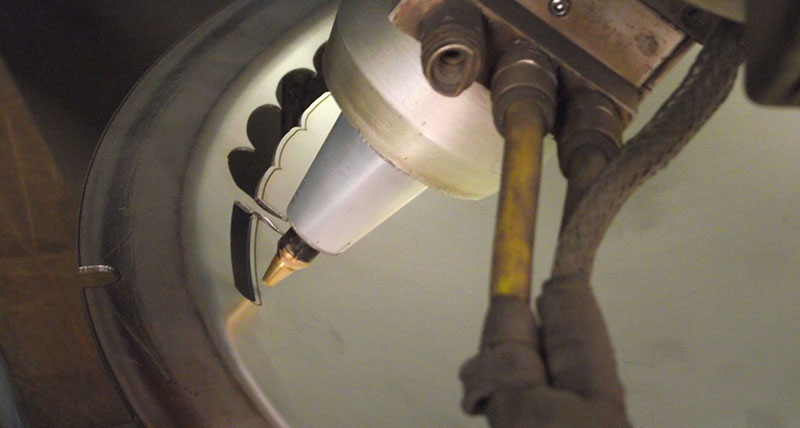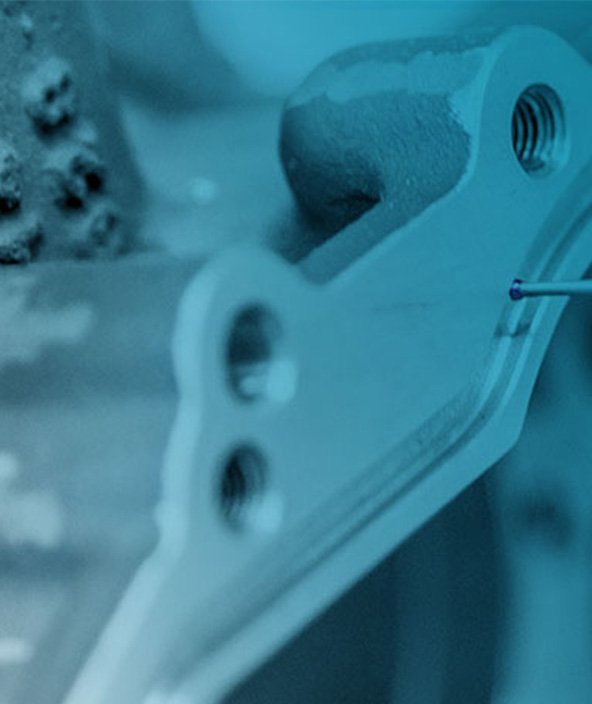RADAN “a springboard” for 5-axis laser pioneers’ development plans
ELC Laser Group - Ireland
Contact us

The only sheetmetal subcontractor in the Irish Republic to offer 5-axis laser cutting, is using RADAN’s specialist Radm-ax module as a springboard to becoming more design-focused.
ELC Laser Group was the first company to introduce laser cutting into the Irish market in 1989, and Operations Manager David Power says as industry leaders, they continue to develop the latest technology, providing customers with what he calls the “definitive choice in laser cutting solutions.”
They offer quality assured design, cut and fabrication solutions for projects across a range of industries, including agricultural, aerospace, pharmaceutical, shop and hotel-fitting, automotive, materials handling and automation.
Having used RADAN to program their two flatbed laser cutters – a BLS 4000 and Prima Domino – for 13 years, he says it was the natural choice when they were looking to upgrade how they control their 5-axis Prima Rapido 2 kw laser. “The machine has a 3-metre x 1500 bed, with a 600 mm Z axis, which gives us tremendous flexibility in cutting 10 mm mild steel and 6 mm stainless steel.”
The company, based at Waterford in the South-Eastern province of Munster, brought 5-axis laser technology to Ireland when a customer developed a need for products manufactured with it. Until recently they used another CAD/CAM software to drive it, but found their requirements had outgrown the system. “We’ve had excellent success with RADAN programming the flatbed lasers, and discovered that its specialist 5-axis module, Radm-ax is ideal for what we need both now, and to help us develop.
 “We can cut and trim complex pressed and formed 3D components, along with box and tubular sections, with total precision.” ELC’s 5-axis laser system ensures total control of the cutting head, enabling chamfers to be cut on the edge of the material, or maintaining 90-degrees to the cutting surface throughout the operation.
“We can cut and trim complex pressed and formed 3D components, along with box and tubular sections, with total precision.” ELC’s 5-axis laser system ensures total control of the cutting head, enabling chamfers to be cut on the edge of the material, or maintaining 90-degrees to the cutting surface throughout the operation.
They make full use of Radm-ax for one particular client – B. S. & B. Safety Systems. “We produce burst panels and explosion panels for them, primarily from stainless steel and nickel alloy. They’re formed parts, so we’re cutting in 3D, not 2D, and Radm-ax allows us to develop 3D models and cut the parts extremely efficiently.”
He says their 5-axis work has improved considerably since switching from their original software to Radm-ax. “It takes in SolidWorks or any other 3D models, and quickly creates the cut paths, and has speeded up the process by at least 20 per cent.”
With a long-standing, sound reputation for being a successful cutting company, ELC Laser Group are now looking to develop a more design-focused role and become a full design and fabrication one-stop shop. “This will enable us to attract new customers, and Radm-ax means we can take in the 3D model and lay it out on the computer simulation of the Prima bed, orientate it, apply toolpaths, then go round it setting the features we want.”
Prototyping is going to play a big role in their plans, and he says all their RADAN modules – the Radraft 2D CAD system, RADAN 3D, Radnest and Radprofile, along with Radm-ax, means they will be able to add value in terms of how they create parts. “Customers can come to us with a concept and we’ll design it from scratch, or they can provide a design and we’ll value-engineer it. Where the parts are formed we take them directly on to the 5-axis machine, and thanks to Radm-ax we can now pre-fabricate some components, and put the cutting operation on after we’ve fabricated them.”
As well as a range of steels, stainless steel and nickel alloy, they work with titanium and aluminium, along with plastics such as acrylic and High Density Polyethylene, and MDF.
Their use of Radm-ax is growing all the time, as more customers ask them to produce components on the 5-axis laser, and they are looking to extend their services to the UK’s aerospace and automotive industries. The software not only minimises programming time, but the cutpaths are more efficient, saving further time during cutting on the machine. And combining that with the comprehensive simulation and proofing tools, streamlines ELC’s day-to-day production while reducing costly errors and eradicating the need for dry runs.
 The toolpaths are accurately simulated on screen, showing the angle of the nozzle as it moves around the part, providing instant feedback on whether or not a specific move is possible. If anycollisions are detected they are highlighted both on the model and via on-screen messages.
The toolpaths are accurately simulated on screen, showing the angle of the nozzle as it moves around the part, providing instant feedback on whether or not a specific move is possible. If anycollisions are detected they are highlighted both on the model and via on-screen messages.
David Power says the software will also play an important part in the next stage of their development. “Our machines are capable of laser-welding, and that’s something we’ll be exploring shortly. It’s fundamental to our success that Radm-ax will program those operations, too.”
